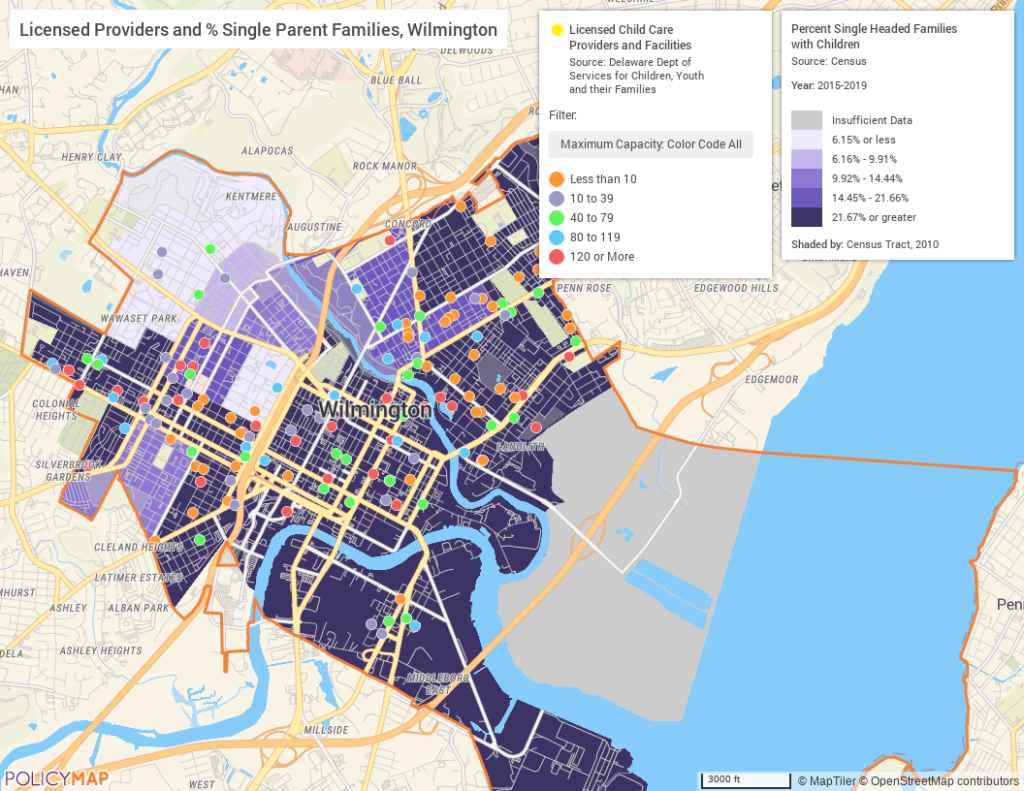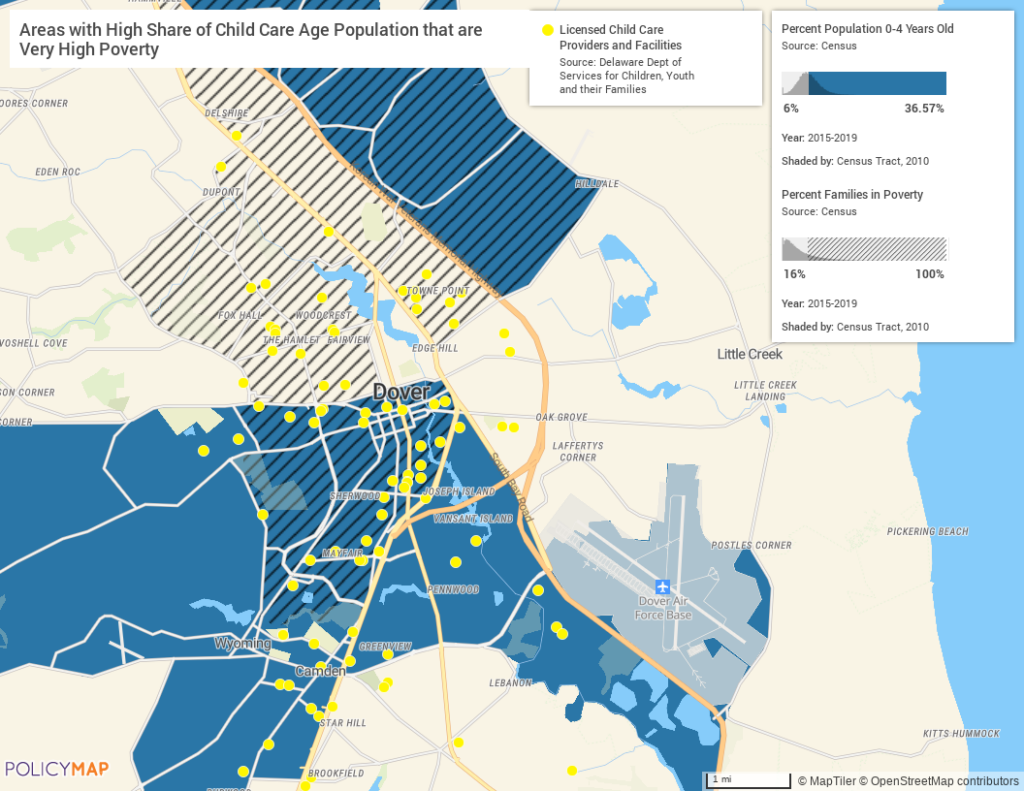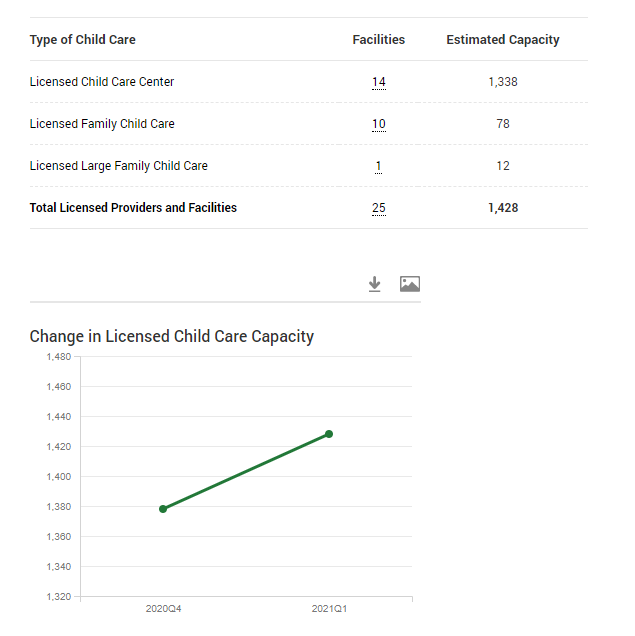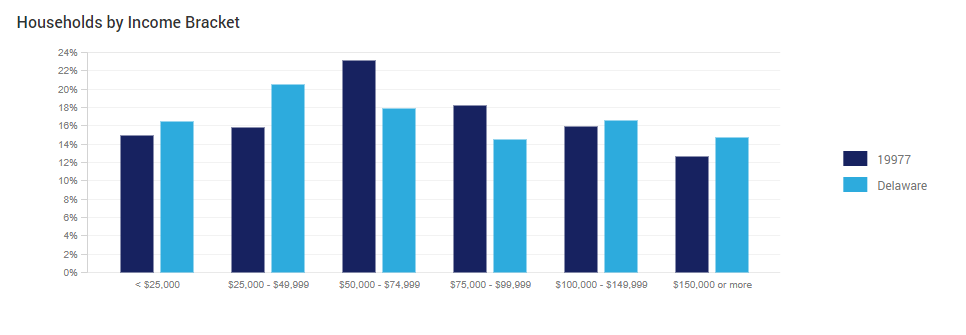PolicyMap Partners with Federal Reserve Bank of Philadelphia to Create Delaware Child Care Mapping Tool

We are excited to announce the release of the Delaware Child Care Mapping Tool which was developed in partnership with the Federal Reserve Bank of Philadelphia! This custom mapping and reporting application was created to equip policymakers, nonprofits, child care providers and local businesses throughout the State of Delaware with data to better understand the child care landscape in their communities.
The Delaware Child Care Mapping Tool is a key resource of the Delaware Research in Action Lab, a partnership between the Philadelphia Fed, the Delaware State Chamber of Commerce, Rodel, and the Delaware Department of Education. The goal of the Research in Action Lab is to educate the business community and other stakeholders in Delaware on the economic importance of the child care sector particularly in terms of making a full and equitable economic recovery from the COVID-19 pandemic.
According to a Federal Reserve Bank of Philadelphia brief on the topic, approximately 58% of Delaware’s child care supply has been at risk of permanent closure throughout the pandemic. Some of the pandemic-related challenges facing child care providers include rising operating costs and capacity limitations. At the same time, disruptions in child care during the pandemic have contributed to declines in labor force participation for parents of young children, especially mothers. Through its public-private partnership, the Delaware Research in Action Lab hopes to educate the business community on the role that the private sector can play in supporting a robust child care infrastructure in order to help build a strong and equitable workforce recovery.
Create Detailed Maps in Seconds
The Delaware Child Care Mapping Tool provides businesses and other stakeholders the ability to create instant maps showing the locations of licensed child care providers across the state alongside other community characteristics such as race & ethnicity, family types, income levels, unemployment, and workforce characteristics.

Layer Multiple Indicators for Deeper Insights
The Multi-Layer maps functionality allows users to display up to 5 data layers on the map and set criteria on each layer to see areas of overlap across multiple indicators. For example, the map below shows areas that have a relatively high share of population under 5 (blue shading) and areas where the percentage of families living in poverty is double the rate for the state (diagonal fill). The child care providers operating in the areas where these two indicators overlap are potentially servicing some of the most vulnerable children in the state.

Access Quick Summary Report Dashboards
The tool also includes functionality to generate summary dashboard reports for a number of predefined boundaries (ZIP codes, school districts, etc.) or custom user defined areas – either drawn on the map or a radius around an address or selected point. The reports provide summary statistics on licensed child care supply in the selected area and a number of interactive charts and data visualizations on demographics, income and other community characteristics. Data and charts can be exported directly from the dashboard report and the entire report can be saved as a PDF.


We are very pleased to be supporting this resource for the Federal Reserve Bank of Philadelphia and the Delaware Research in Action Lab! We hope that businesses and other stakeholders throughout the state are able to use this information to gain better insights into the types of child care investments and partnerships that will best serve their employees and local community.